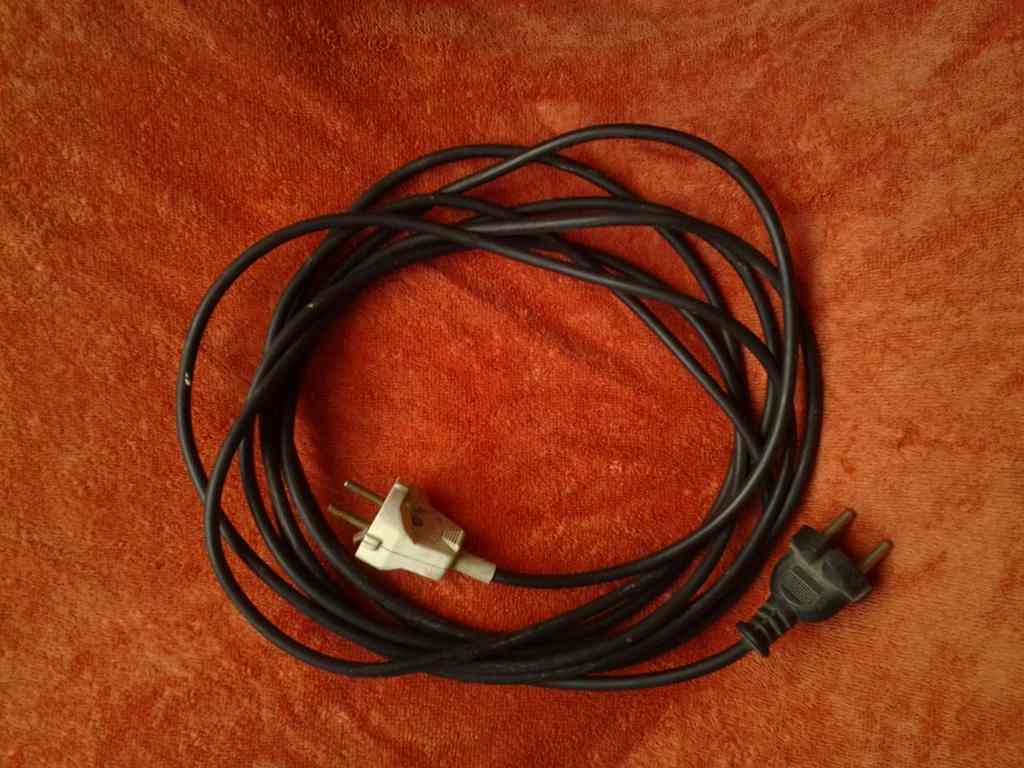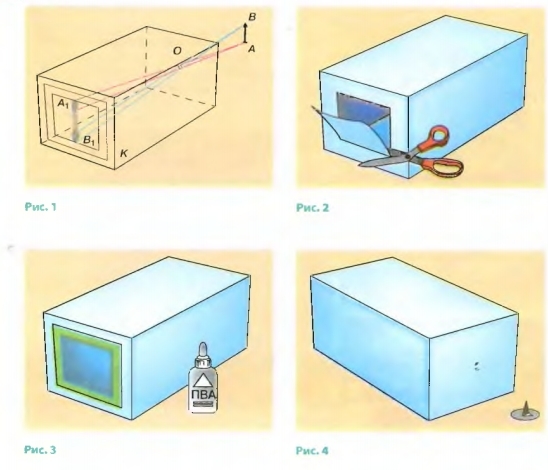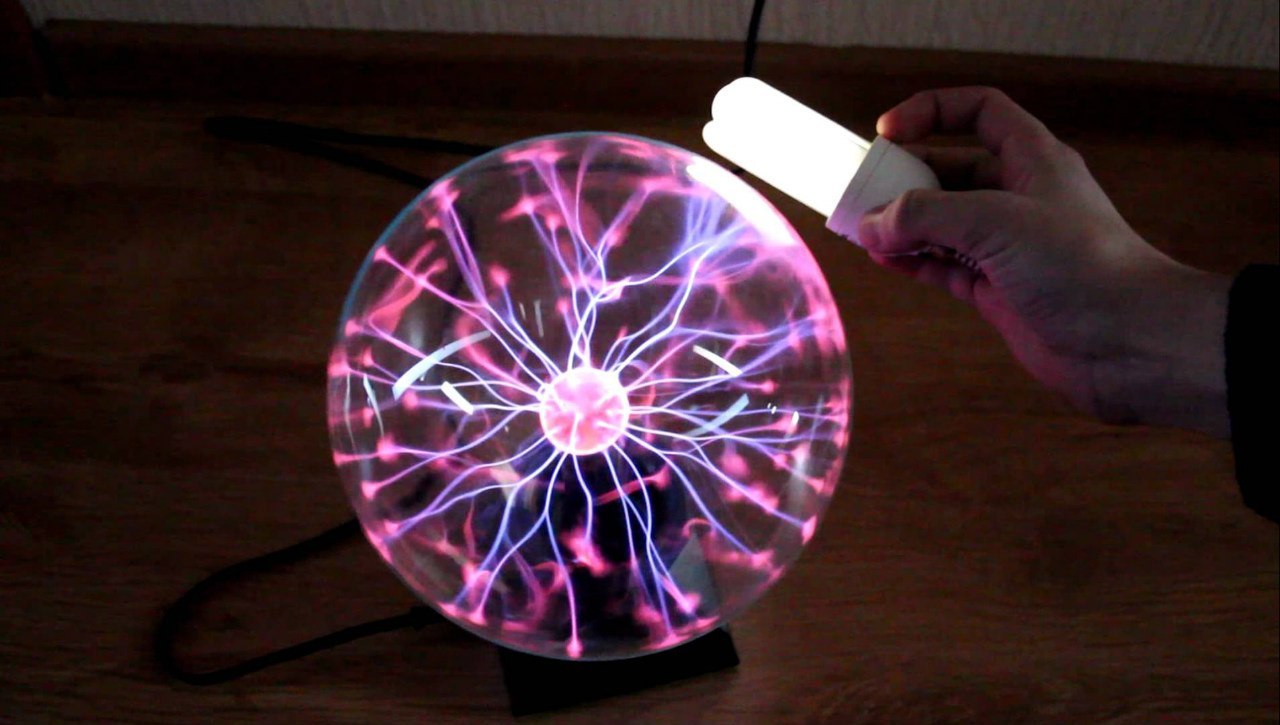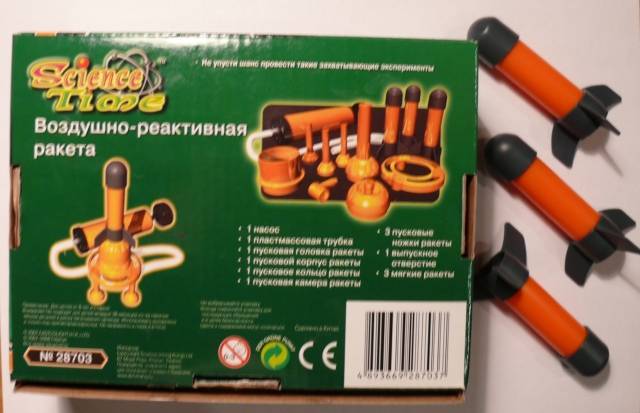Simple experiences with a child at home

An example of a very unsuccessful experience, an explanation in the section “on safety”.
To my previous post there were a lot of comments regarding experiments with children. Then I promised to write a separate post about simple fascinating experiments. Now I keep this promise. This article will be an introductory one, in it I will talk only about the most popular and famous experiments that are easy to perform at home with a child.
The article is based on a list from a previous post , which I expanded with explanations and slightly expanded. Of course, the explanations are not complete, the list is even more so. This is just a seed to interest.
1. Go with him to the science museum
As noted in the comment thread , in almost every major city there is at least one science museum, in addition, there are a huge number of excellent worthy science centers in various cities of Europe, the USA, Israel, etc. For each such institution, the official site is easily located, as well as reviews, reviews and photos from visitors.
I agree with commentators that museums, wanting to please children, seek to create the most “spectacular” exhibits, often to the detriment of the educational part. In addition, the situation is aggravated by the fact that some guides are volunteers with a humanitarian education. Explaining to the child how this or that physical device works, they energetically and with pleasure share their fantasies and inventions. In general, you should worry about this issue in advance, but it is best to conduct a tour yourself (if your knowledge allows it).
2. Assemble a regular flashlight
Different options are possible depending on the age, knowledge and skills of the child, as well as your free time. If the child is older, you can arm yourself with a soldering iron and hold the lighting in a makeshift cardboard house, as the user of GeckoPelt did .

If the child is younger, then it is better to use a ready-made kit for laboratory work.

Or make a similar set yourself. For example, I did the following for my five-year-old son:

In a yellow heat-shrinkable cambric - an ionistor. In 5-10 seconds, it is charged from a standard charge with a USB connector. To the other end, the son attaches a buzer with a built-in generator, a laser pointer, or any 5 mm LED to choose from. While this set is enough for him.
About safety
Большинство знакомых, которые видят этот набор, обеспокоенно спрашивают меня: “А это не опасно, что зарядка включена в сеть, и дети трогают ее?”. Наверное, все дети разные, но после того, как мой сын в два года саморезом выковырял из розетки заглушку, я понял, что лучше научить ребенка осторожному обращению с вилкой и розеткой, чем ставить затычки и замки.
Гораздо более опасными я нахожу вываливающиеся из коробок розетки, или розетки с поврежденными крышками, но самый большой ужас я испытал, когда мы въехали в одну съемную квартиру. Ее владелец оригинальным способом устранил разрыв линии с одной из комнат:

Мои дети (2 и 5 лет) очень любопытны и прекрасно знают, что с одной стороны провода находится вилка, а с другой — прибор, а если это не так, то стоит разобраться. К счастью для моей семьи, я это тоже это знал, и первым заметил необычную “штуковину”. Конструкция была моментально изъята, а проводка переделана. НИКОГДА, НИКОГДА не допускайте подобного в своей квартире! Это очень опасно и действительно может привести к летальному исходу. Удивительно, но владелец квартиры так и не понял причину моих возмущений.
Гораздо более опасными я нахожу вываливающиеся из коробок розетки, или розетки с поврежденными крышками, но самый большой ужас я испытал, когда мы въехали в одну съемную квартиру. Ее владелец оригинальным способом устранил разрыв линии с одной из комнат:

Мои дети (2 и 5 лет) очень любопытны и прекрасно знают, что с одной стороны провода находится вилка, а с другой — прибор, а если это не так, то стоит разобраться. К счастью для моей семьи, я это тоже это знал, и первым заметил необычную “штуковину”. Конструкция была моментально изъята, а проводка переделана. НИКОГДА, НИКОГДА не допускайте подобного в своей квартире! Это очень опасно и действительно может привести к летальному исходу. Удивительно, но владелец квартиры так и не понял причину моих возмущений.

There are still electronic designers, such as “ZNATOK” and its clones. In general, I relate to such designers well, but before acquiring it, there are a few points to consider:
- A small child is not yet able to perceive blocks as conductors and abstract assemblies from them into an electrical circuit, that is, this set is not at all for kids.
- Without adult control, children immediately discover that the propeller can be launched, and that’s all they do. I can’t say that this is a bad occupation, but the study of recruitment usually ends here.
- Under the supervision of a strict adult, the child carefully repeats the scheme after scheme from the book without the slightest understanding of what he is doing. Sometimes children try to do something on their own and a short circuit will occur. The battery heats up and sits down, a strict adult is very unhappy, the child understands that he “made a mistake” and then collects only according to the scheme.
In other words, if you presented a child with a similar set, then boldly play and have fun with him, explaining and inventing your own schemes!
3. Make the ping-pong ball soar in the air stream from the hairdryer
Everything is simple here:
- We take a ping-pong ball and a hairdryer without nozzles.
- We turn on the hair dryer and turn it so that the air flow hits vertically upwards.
- We place the ball in the axis of the flow at a distance of about 10 cm from the nozzle of the hairdryer.
- According to Bernoulli's law, the ball will tend to be in the center of the stream. As a result, he will levitate in the stream.
Instead of a tennis ball, you can use an inflatable ball.
4. Make a microscope from a drop on glass

The drop has a spherical shape and, in fact, is a collecting lens. It is convenient to study the microworld with a drop on the edge of the pipette, or a drop on the surface of the glass. The smaller the drop, the smaller objects it allows you to observe. If you want to show your child the pixels on the smartphone screen, then keep in mind that modern smartphones have high dpi. To make out a pixel, a drop must be very small. For these purposes, I use a spray gun. The drops are so small that they evaporate in a few seconds.
I also recommend reading a post from beliakov : “Macro photography with improvised means: just add water”
5. Assemble the unipolar motor
A unipolar motor is the simplest type of electric motor available. In the home version, two options are widespread. The first - with a rotating self-tapping screw and a magnet, the second - with a fixed magnet and a rotating frame. Both options are noted in this comment from SilverHorse .
6. Make a compass from a magnetized needle on the water
According to this link the video from my colleagues in the laboratory. In addition to the compass, the video also very clearly explains how to repeat the experience of Oersted.
7. Create your kaleidoscope

I took a photo from this site . A detailed description of the assembly process can also be found there. I personally confirm that ordinary aluminum tape can also be used as mirrors.
8. Show the night sky and the Milky Way (out of town)

Let me remind you that the urban flare practically does not make it possible to admire our galaxy, and it is not possible in every village. But if you and your son have such an opportunity, for example, somewhere along the road between cities - take the time to stop and enjoy the greatness of the Milky Way.
9. Show Saturn and the Moon through a telescope
It seems to me that the post from lozga will be exhaustive : “An IT specialist on vacation: what about the telescope?”
10. Demonstrate how to build an image with a lens (ordinary magnifier)
It is no secret that the collecting lens allows you to project real inverted images onto the screen. I still remember what was a real discovery for me, that when the magnifier is correctly placed between the candle and the wall, an inverted image of the candle appears on the wall. Now for the children I no longer light candles, but project the screens of their mobile phones onto the wall. Thus, a primitive projector is obtained. As a collective lens, you can also use the Fresnel lens.

Such a lens has a large area and a small focal length, so it captures more light and the picture turns out brighter. If desired, the lens and phone can be inserted into the shoe box, then the device is more like a projector, there is also no spurious illumination from the phone screen.

Photo fromof this site . There you can find instructions and other examples.
If the child is older, and you are full of strength and energy, then you can even make a real projector with significant aperture and resolution. The search query “do-it-yourself projector Fresnel lens” to help you.

Burning with a magnifying glass can also be added to this section, thanks to FlameStorm for recalling. If the child is small, we say that the lens collects light from the sun at one point, if older - that we get the construction of the image of the sky with clouds and the sun, where the image of the sun burns out. You did know that, right?
11. Assemble the pinhole camera.

This is a very worthwhile experiment with the “Wow effect” and a high-quality methodological component. The camera obscura - a dark room, on the wall of which, through the hole, the image of the street is projected. In fact, this is the progenitor of cameras!

There are a lot of pinhole camera designs. From the simplest ones, as in the photo, to more elaborate models with a variable focal length, with sets of holes of different diameters and protection against eye exposure. The most diligent parents can put together a full-fledged film camera with their children, as in this article . Well, if it so happened that the lens on your camera is removed, it will be a crime not to make a few pinhole photos.

12. Electrify the balloon and stick it to the wall
I think this experiment is well known to everyone. Electrostatics allows you to create a large number of colorful experiments, in addition, many interesting experiments have been developed in my “Laboratory for teaching physics” at my university. I will not even try to fit something in this post, but will leave all the material for a separate article.
13. Buy an ultraviolet flashlight and turn off the lights in the room

I repeat, almost all bright "poisonous" colors luminesce. Such paints cover most of children's toys. It looks very impressive. You can still shine on the pencil case, as well as draw something with a bright marker.
Instead of a flashlight, you can buy a UV lamp, or borrow a lamp for your nails from your wife:

In no case do you experiment with a quartz UV lamp! It emits hard ultraviolet light, incredibly harmful to the eyes, unlike an LED flashlight.
14. Buy a plasma lamp and light a fluorescent lamp in the hands of a child

inside such a lamp is a Tesla transformer, which emits a powerful alternating electric field, which, in turn, leads to gas discharges in the lamps.
The lamp is very popular with young children. In no case do not leave them alone with the device, they can beat a lamp or lamp. Just as tormozedison correctly noted , do not bring electronics to the luminaires that you are not ready to part with.
15. Buy soap bubbles

J. B. S. Chardin. Bubble. OK. 1739
This proposal triggered a wave of discussion in the comments. I agree that you can buy bubbles and make yourself. There is a huge variety of fun with soap bubbles, ranging from simple physical experiments (Y. Perelman, “Entertaining Physics.” Book 1. Chapter 5), to educational demonstrations for students of physics faculties (Y. Geguzin, “Living Crystal” and “Soapy bubbles ”). My children themselves guessed that with the help of liquid soap you can get soap bubbles, now they do not leave the bathroom for hours.
A separate layer are the show with giant bubbles. There is not much physical content in them, but children really like them. You can take your child to the show in the summer, or buy the kit yourself. If you want to try to make a liquid for bubbles with your own hands - I recommend the link that Meklon provided .
16. Experiments with the expansion of gases during heating
The purpose of all these experiments is to show that if the gas is heated, then the pressure in it increases and it begins to expand. I try not to hold these demonstrations until I explain the basics of MKT to children.
The most famous simple and vivid experience is an egg in a bottle. When I spent a week of entertaining physics at a private school in Montenegro, the children liked this experiment so much that during the break they themselves decided to draw a short instruction:

I admit that the instruction was with one mistake, but I did not interfere in the creative process.
For interested readers a riddle. Using a medical glove and a can of coffee, you can make a simple thermometer by which you can determine whether it is warm, cold, or hot.
17. Balloon

Explain to the child the principle of the operation of the Hot Air Balloon and start the Chinese lantern with it.
18. Helium balloon
Buy a helium balloon and tell your child about the balloon and ballooning.
19. Reactive force

The simplest thing is to launch a balloon along the string, as in the photo. A higher level is to make a rocket out of a plastic bottle on water and compressed air. Or buy a similar rocket:

20. Recommendation from jar_ohty
Add to the list “Make a telescope of two magnifying glasses, holding one in the left hand near the eye, the other with the right.” For me at the age of six it was such a discovery! Which I, moreover, myself did.
21. Recommendation from alecv
From simple experiments yet:
· On a sunny day, take a mirror and get a sunny bunny at home on the ceiling. Then take a basin where 3 cm of water is poured and lower the same mirror with one edge (get a water prism). The edges of the bunny will turn into a rainbow.
· In a large container, such as an aquarium, pour water and half a cup of milk. Show the propagation of a ray of light from a laser pointer and its reflection.
Conclusion
Before conducting an experiment, I strongly recommend that you understand the physics of the process and think about how it would be better to convey it to your child. In addition, it is worth looking for how others perform these experiments, because the same experience has a huge number of variations in performance. In parallel, you will find a huge number of new interesting ideas. I invite you to share in the comments fascinating experiments, useful Internet resources and books, as well as discuss ready-made kits.
In the following posts, I would like to share the methodological work of the “Laboratory for the Methods of Teaching Physics”, where I was lucky enough to work in due time, and also to tell where to get it and how to conduct experiments with liquid nitrogen and dry ice at home.
